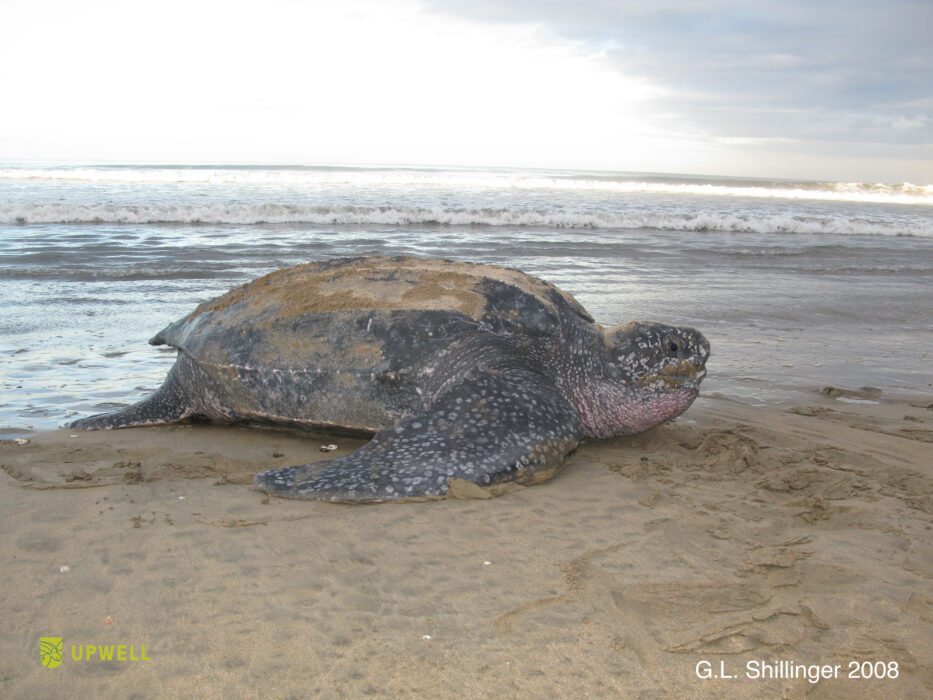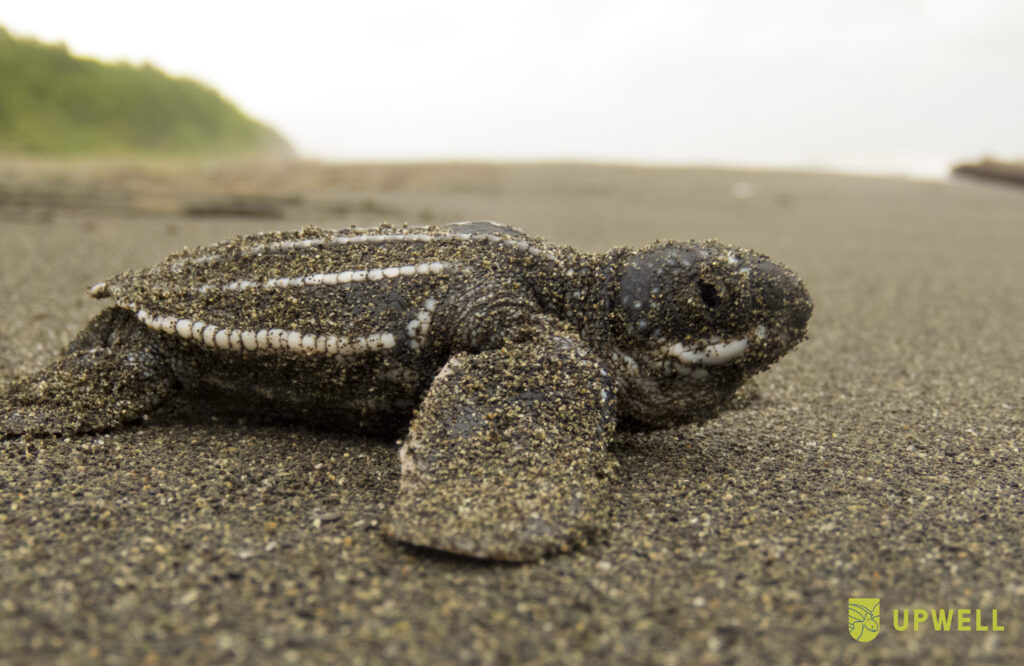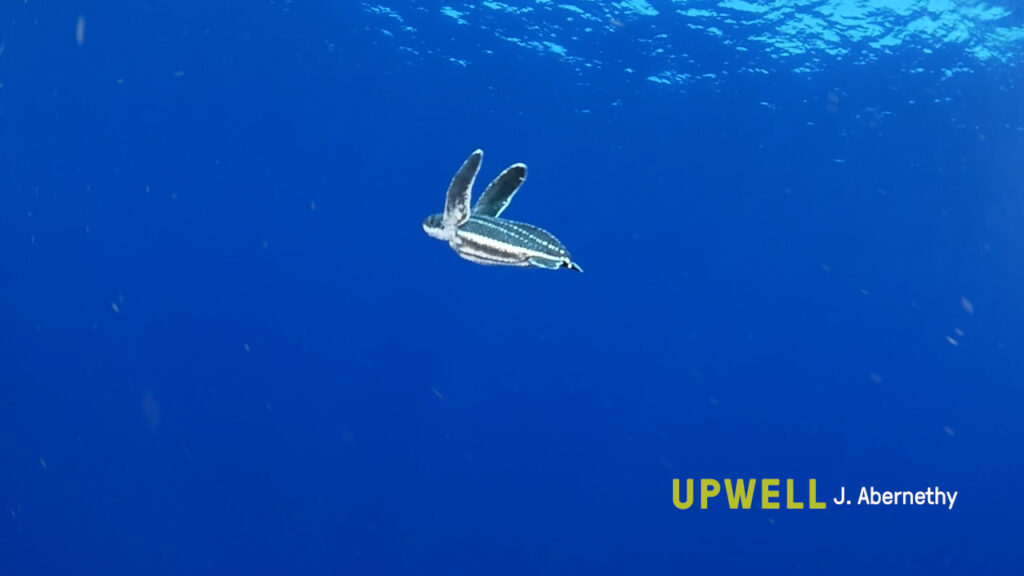Not much is known about the movement of juvenile turtles after they are born and enter the open ocean, and this is a critical time for turtles as their survival rate is lower in these more vulnerable years. Thanks to a fruitful collaboration between Mercator Ocean International and the non-governmental organisation Upwell, a paper on sea turtle dispersal has been published in Frontiers in Marine science. The paper is co-authored by our expert oceanographers Tony Candela, Philippe Gaspar and by George L. Shillinger from Upwell.
A focus on the endangered Northwest Atlantic leatherback turtle
The authors focused on the Northwest Atlantic (NWA) leatherback turtle (Dermochelys coriacea) subpopulation, which was recently classified as endangered. The leatherback turtle is the largest of all living turtles reaching lengths of up to 1.8 metres. Baby leatherback turtles weigh a few grams only, while they can reach up to 500 kilograms as adults, in a span of a few years, eating mostly jellyfish! They can be recognised by their carapace, which is covered by oily flesh and flexible, leather-like skin, after which they are named.

Observations and lost years
The Northwest Atlantic leatherback turtles nest in the Wider Caribbean Region and include five genetic stocks, all declining, albeit at different rates. By equipping adult turtles with satellite tags, oceanographers and biologists manage to collect observations and information on their life. That is unfortunately not possible or at least extremely complicated with baby leatherback turtles, too small to be equipped. When they are born, they run on the beach towards the sea and disappear in water. They reappear once adults, when they come back to nest on their initial nesting beach. The period in between – of which we don’t know much – is called “the lost years” and represents a gap of information of about 15-20 years in the life of the turtle.
Why are leatherback turtle populations declining?
The causes are multi-faceted and difficult to identify. The sea turtles experience multiple stressors throughout their lives. Demographic models show that a sea turtle’s chances of survival are determined in the very first phase of its life at sea, thus the survival of juveniles highly influence the survival of the whole population. However, this life stage, the lost years, remains largely unobserved.

Numerical simulations: filling the gap with models
Dispersal of juvenile leatherback turtles from different Caribbean nesting beaches: A model study presents a suite of numerical simulations where juveniles from the five NWA leatherback stocks disperse mainly in response to combination of two factors: the effect of ocean currents (passive) and the active search of favourable habitats, that include suitable temperatures and quantity of food. Simulations reveal when and where leatherback juveniles likely disperse and, thus, provide insights on the environmental conditions and human-induced threats they may encounter.
As demonstrated in the paper, simulated individual paths initially disperse following either the “Caribbean route,” inside the Caribbean Sea and the Gulf of Mexico, or the “Atlantic route” east of the Antilles Islands Arc. Late dispersal is similar in all genetic stocks, as all tend to follow a similar path in the eastern Atlantic Ocean and towards the Western Mediterranean Sea after the initial stage. Juveniles following the Caribbean route are rapidly swept along northwards by the Gulf Stream and are at high risk of death due to cold temperatures. The Atlantic route is less lethal as individuals progress more slowly toward higher latitudes.

Another point highlighted by the simulations is that the percentage of juveniles from the Western Caribbean visiting the Gulf of Mexico is larger than for any other stock. According to the learned migration goal (LMG) hypothesis, adult sea turtles tend to exploit foraging areas previously identified at the juvenile stage: this may thus explain why Western Caribbean adults are relatively more abundant in the Gulf of Mexico.
Finally, the paper’s results suggest that the recently observed increase in the percentage of Western Caribbean adults migrating into the Gulf of Mexico could be linked to two factors. The first explanation is that there have been bycatch reduction measures implemented in 2003–2004. These include laws and measures concerning fishing gear used designed to diminish the accidental catch of non-target species like dolphins and turtles, highlighting the importance of conservation initiatives and regulations. Secondly, there is an observed increase in the frequency of currents leading juveniles further in the Gulf of Mexico (Loop Current intrusion and eddy-shedding events) that started around the year 2000.
